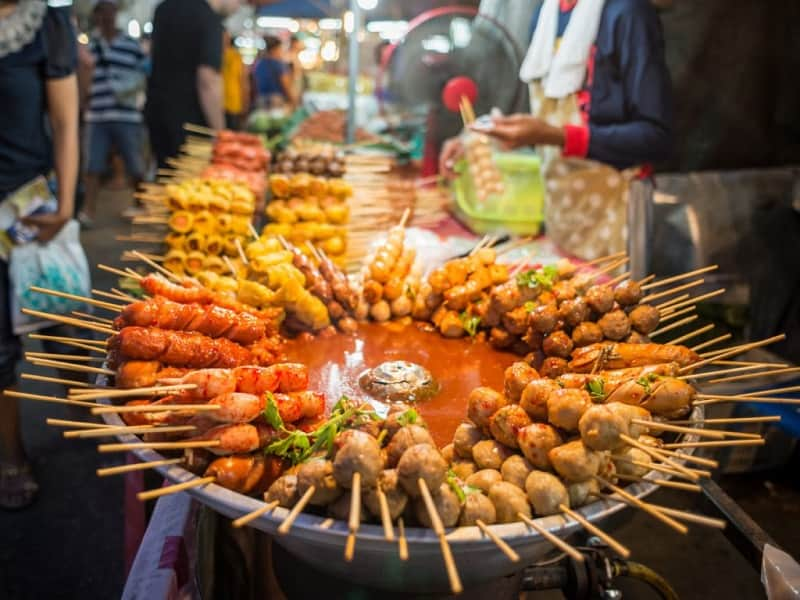
Mclub World – Across the world, flavor tells stories. From roadside carts to Michelin-starred establishments, food embodies identity. Street food brings raw authenticity. Meanwhile, fine dining emphasizes refinement and technique. Though different, both represent essential parts of culture. As a result, global travelers often explore both ends. One moment, someone bites into satay in Jakarta. The next, they’re tasting truffle risotto in Milan. This contrast enriches culinary experiences. People eat not only for survival, but to connect. Dishes carry history, migration, and creativity in every bite. Therefore, exploring flavors becomes a powerful cultural exchange. Tastes are more than mere sensations. They are expressions of geography, memory, and human resilience.
Street food remains the heartbeat of many cities worldwide. In Bangkok, vendors cook Pad Thai over open flames all night. In Istanbul, simit sellers wander sidewalks with baskets full. These simple stalls, despite their modest look, preserve generations of tradition. Recipes are passed from parent to child without formal schooling. Additionally, street food adapts quickly to local demands and seasons. Because of its affordability, people from all walks of life enjoy it. While the flavors remain humble, their cultural impact is vast. Moreover, travelers often prefer street stalls over luxury dining. They seek authenticity, not chandeliers. Through these experiences, people bond with locals effortlessly. One smile, one exchange, and a shared skewer spark instant connection. Street food creates bridges where words fail. In this way, a taco or curry puff becomes a conversation starter. Such moments add depth to any journey, making memories last.
“Read About: The Rise of XR in Smart Cities and Everyday Life”
On the other hand, fine dining showcases culinary artistry. Top chefs experiment like scientists, balancing chemistry and emotion. They transform ingredients into stunning visual and flavor compositions. Moreover, fine dining involves more than just food. Lighting, sound, and service form a curated atmosphere. Consequently, eating becomes immersive rather than transactional. Each course carries intent, theme, and often, a story. For instance, a spring menu might reflect nature’s rebirth using edible flowers. Meanwhile, Nordic chefs highlight foraged herbs and fermentation techniques. The dishes often look like art more than meals. Prices soar accordingly, but many find the investment worthwhile. Unlike street food, fine dining aims to surprise and challenge. Patrons expect originality, seasonal variation, and narrative. Therefore, these meals linger in memory not just because of taste, but the total experience. In this space, food becomes a performance.
Interestingly, boundaries between street food and fine dining are blurring. Upscale restaurants now draw heavily from street food traditions. For example, Korean bibimbap is plated like a sculpture in Zurich. Likewise, tacos appear with wagyu beef and caviar in New York. This hybrid movement reflects a deeper respect for humble origins. Instead of viewing them as separate, chefs mix both approaches fluidly. Additionally, “elevated street food” menus attract younger audiences. As a result, fine dining becomes more approachable, even playful. Meanwhile, famous street vendors are receiving international recognition. Some even earn Michelin stars without changing their roots. Pop-ups and food trucks collaborate with luxury brands. This fusion celebrates both tradition and innovation without compromise. Consequently, customers gain richer, more inclusive experiences. The evolution shows that taste knows no class.
Above all, food serves as a tool for cultural exchange. A bowl of ramen in London carries echoes of Tokyo’s backstreets. At the same time, falafel in Berlin connects migrants with their homeland. Through shared meals, people discover more than ingredients. They find empathy, stories, and struggle folded into flavor. As such, culinary festivals now invite chefs across borders to collaborate. Instagram accelerates this movement, making food viral and visual. A new trend in Seoul might inspire kitchens in Brazil within days. Therefore, the global palate keeps expanding and transforming. Food functions not only as pleasure, but as bridge and mirror. Each bite becomes both memory and invitation. Shared taste can overcome language, ideology, and prejudice.
This website uses cookies.